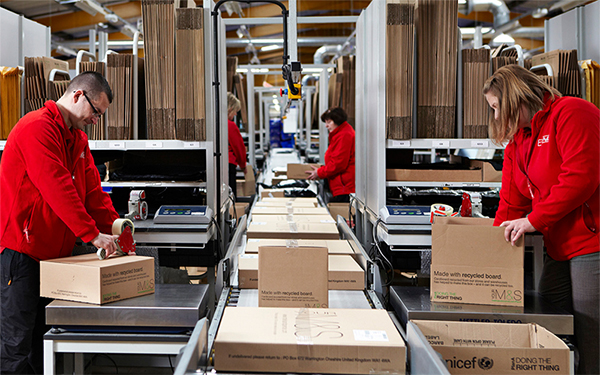Senators Take Aim at Amazon with Warehouse Worker Protection Act
The proposed legislation aims to regulate the use of productivity quotas and improve safety for workers.
The Warehouse Worker Protection Act, aimed at regulating the use of productivity quotas in warehouses, was introduced yesterday by Democratic Senators Ed Markey (Massachusetts) and Tina Smith (Minnesota). This legislation targets employers like Amazon, whose quota systems are often criticized for promoting unsafe working speeds and limited breaks.
The new bill is inspired by similar laws that have passed in California, New York, Washington, and other states.
The bill mandates greater transparency from employers regarding workplace quotas and what happens when they aren't met. It would also require workers to receive at least two business days' notice before any changes to quotas or monitoring practices are implemented.
“When corporations repeatedly use and abuse warehouse workers, they show us that their number one obligation is to their profits. This bill would guarantee that we have basic standards in place to protect warehouse workers from the worst of corporate greed and move us one step further towards true worker justice,” Markey said.
The proposed law would eliminate 'harmful quotas,' specifically targeting practices like Amazon’s 'time off task.' This measure tracks the minutes a worker is not scanning items, a policy criticized for creating stressful working conditions and serving as a surveillance tool.
“Amazon has perfected a punishing quota system that pushes workers to and beyond their physical limits,”
“Amazon has perfected a punishing quota system that pushes workers to and beyond their physical limits,” Markey stated during a press conference. He criticized the company for setting unclear performance standards and then dismissing employees who failed to meet these undisclosed expectations.
Amazon, the second-largest private employer in the U.S., has been under scrutiny for its labor practices, particularly regarding the safety of its frontline workers. The company asserts that it does not use fixed quotas but relies on 'performance expectations' that take into account the overall performance of teams at its sites. Amazon also disputes allegations that its employees do not receive adequate breaks and states that workers can access their performance data at any time, with managers available to provide coaching.
However, many Amazon employees have raised concerns that the company's productivity expectations are often unclear and lead to disciplinary actions or termination. These practices have drawn the attention of the Occupational Safety and Health Administration (OSHA), which in January 2023 cited Amazon for workplace safety violations. Both OSHA and the U.S. Department of Justice are investigating conditions in several Amazon warehouses, with the DOJ also examining allegations of underreported injuries—a charge the company denies.”
During the press conference, Amazon warehouse worker Wendy Taylor shared a personal testimony of the risks involved, recounting an incident where she was urged to return to work by onsite medical staff after a fall that resulted in a torn meniscus. Taylor criticized the company’s tough work schedule and the lack of timely medical care.
“Amazon workers provide same-day shipping, but we can't even get the same-day care we deserve,” she stated.
Article Topics
Amazon News & Resources
Five Innovations Shaping the Future of Last-Mile Delivery Week in Review: Baltimore Bridge Price Tag, FTC Fines Williams-Sonoma, and More Amazon Rolls Out 50 New Electric Volvo Trucks in California Senators take a close look at Amazon with Warehouse Worker Protection Act Senators Take Aim at Amazon with Warehouse Worker Protection Act Ranking the World’s 10 Biggest Supply Chains North Carolina Welcomes Amazon’s Newest Mega-Warehouse More AmazonLatest in Warehouse|DC
The Rise of the Stanley Cup: A Supply Chain Challenge GXO Logistics Deploys 500 Robots for Top Sporting Goods Retailer UPS Cuts Email Response Time in Half with AI Automation Cambium is on a Quest to Breathe New Life Into Old Wood Record High in Container Production Expected for 2024 IBM Investing $730 million to Expand Semiconductor Plant in Canada Indiana Tests Futuristic Highway that Can Charge EVs While Driving More Warehouse|DC













